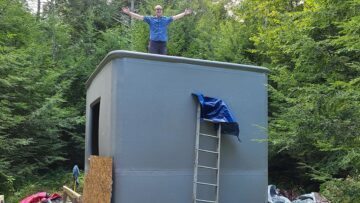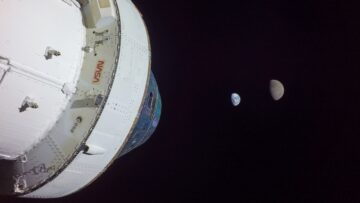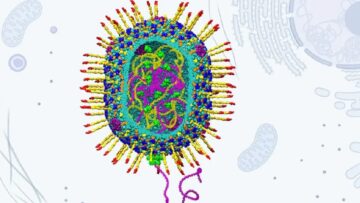
OpenAI Could Unveil Its Google Search Competitor on Monday
Jess Weatherbed | The Verge
“OpenAI is reportedly gearing up to announce a search product powered by artificial intelligence on Monday that could threaten Google’s dominance. That target date, provided to Reuters by ‘two sources familiar with the matter,’ would time the announcement a day before Google kicks off its annual I/O conference, which is expected to focus on the search giant’s own AI model offerings like Gemini and Gemma.”
archive page
DeepMind Is Experimenting With a Nearly Indestructible Robot Hand
Jeremy Hsu | New Scientist
“This latest robotic hand developed by the UK-based Shadow Robot Company can go from fully open to closed within 500 milliseconds and perform a fingertip pinch with up to 10 newtons of force. It can also withstand repeated punishment such as pistons punching the fingers from multiple angles or a person smashing the device with a hammer.”
First Patient Begins Newly Approved Sickle Cell Gene Therapy
Gina Kolata | The New York Times
“On Wednesday, Kendric Cromer, a 12-year-old boy from a suburb of Washington, became the first person in the world with sickle cell disease to begin a commercially approved gene therapy that may cure the condition. For the estimated 20,000 people with sickle cell in the United States who qualify for the treatment, the start of Kendric’s monthslong medical journey may offer hope. But it also signals the difficulties patients face as they seek a pair of new sickle cell treatments.”
Commercial Space Stations Approach Launch Phase
Andrew Jones | IEEE Spectrum
“A changing of the guard in space stations is on the horizon as private companies work towards providing new opportunities for science, commerce, and tourism in outer space. …The challenge [new space stations like Blue Origin’s] Orbital Reef faces is considerable: reimagining successful earthbound technologies—such as regenerative life support systems, expandable habitats and 3D printing—but now in orbit, on a commercially viable platform.”
This Gigantic 3D Printer Could Reinvent Manufacturing
Nate Berg | Fast Company
“This machine isn’t just spitting out basic building materials like some massive glue gun. It’s also able to do subtractive manufacturing, like milling, as well as utilize a robotic arm for more complicated tasks. A built-in system allows it to lay down fibers in a printed object that give it greater structural integrity, allowing printed spans to stretch farther, and enabling factory-based 3D printed buildings to become even larger.”
Wayve Raises $1B to Take Its Tesla-Like Technology for Self-Driving to Many Carmakers
Mike Butcher | TechCrunch
“Wayve calls its hardware-agnostic mapless product an ‘Embodied AI,’ and it plans to distribute its platform not just to car makers but also to robotics companies serving manufacturers of all descriptions, allowing the platform to learn from human behavior in a wide variety of real-world environments.”
The US Is Cracking Down on Synthetic DNA
Emily Mullin | Wired
“Synthesizing DNA has been possible for decades, but it’s become increasingly easier, cheaper, and faster to do so in recent years thanks to new technology that can ‘print’ custom gene sequences. Now, dozens of companies around the world make and ship synthetic nucleic acids en masse. And with AI, it’s becoming possible to create entirely new sequences that don’t exist in nature—including those that could pose a threat to humans or other living things.”
Fall Into a Black Hole in Mind-Bending NASA Animation
Robert Lea | Space.com
“If you’ve ever wondered what would happen if you were unlucky enough to fall into a black hole, NASA has your answer. A visualization created on a NASA supercomputer to celebrate the beginning of black hole week on Monday (May 6) takes the viewer on a one-way plunge beyond the event horizon of a black hole.”
[embedded content]
A Company Is Building a Giant Compressed-Air Battery in the Australian Outback
Dan Gearino | Wired
“Toronto-based Hydrostor is one of the businesses developing long-duration energy storage that has moved beyond lab scale and is now focusing on building big things. The company makes systems that store energy underground in the form of compressed air, which can be released to produce electricity for eight hours or longer.”
The Way Whales Communicate Is Closer to Human Language Than We Realized
Rhiannon Williams | MIT Technology Review
“A team of researchers led by Pratyusha Sharma at MIT’s Computer Science and Artificial Intelligence Lab (CSAIL) working with Project CETI, a nonprofit focused on using AI to understand whales, used statistical models to analyze whale codas and managed to identify a structure to their language that’s similar to features of the complex vocalizations humans use. Their findings represent a tool future research could use to decipher not just the structure but the actual meaning of whale sounds.”
Image Credit: Benjamin Cheng / Unsplash
- SEO Powered Content & PR Distribution. Get Amplified Today.
- PlatoData.Network Vertical Generative Ai. Empower Yourself. Access Here.
- PlatoAiStream. Web3 Intelligence. Knowledge Amplified. Access Here.
- PlatoESG. Carbon, CleanTech, Energy, Environment, Solar, Waste Management. Access Here.
- PlatoHealth. Biotech and Clinical Trials Intelligence. Access Here.
- Source: https://singularityhub.com/2024/05/11/this-weeks-awesome-tech-stories-from-around-the-web-through-may-11/
- :has
- :is
- :not
- $UP
- 000
- 10
- 11
- 20
- 3d
- 500
- 6
- a
- Able
- actual
- AI
- AIR
- All
- Allowing
- allows
- also
- an
- analyze
- and
- Announce
- Announcement
- annual
- answer
- approach
- approved
- ARM
- around
- artificial
- artificial intelligence
- AS
- At
- Australian
- awesome
- basic
- battery
- BE
- became
- become
- becoming
- been
- before
- begin
- Beginning
- begins
- behavior
- Beyond
- Big
- Black
- Black Hole
- Blue
- Building
- Building Materials
- buildings
- built-in
- businesses
- but
- by
- Calls
- CAN
- car
- celebrate
- cell
- challenge
- changing
- cheaper
- closed
- closer
- Commerce
- commercially
- communicate
- Companies
- company
- competitor
- complex
- complicated
- computer
- computer science
- condition
- Conference
- considerable
- content
- could
- cracking
- create
- created
- credit
- CSAIL
- cure
- custom
- Date
- day
- decades
- Decipher
- developed
- developing
- device
- difficulties
- Disease
- distribute
- dna
- do
- Dominance
- Dont
- down
- dozens
- easier
- eight
- electricity
- embedded
- enabling
- energy
- enough
- entirely
- environments
- estimated
- Even
- Event
- EVER
- exist
- expandable
- expected
- experimenting
- Face
- faces
- Fall
- familiar
- FAST
- faster
- Features
- fibers
- findings
- First
- Focus
- focused
- focusing
- For
- Force
- form
- from
- fully
- future
- gearing
- Gemini
- giant
- Give
- Go
- Google Search
- Google’s
- greater
- Guard
- hammer
- hand
- happen
- Hole
- hope
- horizon
- HOURS
- HTML
- HTTPS
- human
- Humans
- identify
- IEEE
- if
- in
- increasingly
- integrity
- Intelligence
- into
- IT
- ITS
- jones
- journey
- jpeg
- just
- Kicks
- lab
- language
- larger
- latest
- launch
- lay
- LEARN
- Led
- Life
- like
- living
- longer
- machine
- make
- Makers
- MAKES
- managed
- Manufacturers
- manufacturing
- many
- masse
- massive
- materials
- Matter
- May..
- meaning
- medical
- milliseconds
- mind-bending
- MIT
- model
- models
- Monday
- more
- moved
- Mullin
- multiple
- Nasa
- nearly
- New
- New York
- newly
- Nonprofit
- now
- object
- of
- off
- offer
- Offerings
- on
- ONE
- open
- opportunities
- or
- Orbit
- Other
- out
- outer space
- own
- pair
- patient
- patients
- People
- perform
- person
- plans
- platform
- plato
- Plato Data Intelligence
- PlatoData
- player
- plunge
- pose
- possible
- powered
- private
- Private Companies
- produce
- Product
- project
- provided
- providing
- qualify
- raises
- real world
- recent
- REEF
- regenerative
- reimagining
- reinvent
- released
- repeated
- reportedly
- represent
- research
- researchers
- Reuters
- robot
- Robotic
- robotics
- Scale
- Science
- Search
- Seek
- self-driving
- serving
- Shadow
- Sharma
- signals
- similar
- So
- some
- sounds
- Sources
- Space
- spans
- start
- States
- Stations
- statistical
- storage
- store
- Stories
- stretch
- structural
- structure
- successful
- such
- support
- Support Systems
- synthetic
- system
- Systems
- Take
- takes
- Target
- tasks
- team
- tech
- Technology
- than
- thanks
- that
- The
- the world
- their
- therapy
- they
- things
- this
- those
- threat
- threaten
- Through
- time
- to
- tool
- Tourism
- towards
- treatment
- treatments
- underground
- understand
- United
- United States
- unveil
- us
- use
- used
- using
- utilize
- variety
- viable
- Video
- viewer
- visualization
- washington
- Way..
- we
- web
- Wednesday
- week
- WELL
- were
- Whale
- whales
- What
- which
- WHO
- wide
- Williams
- with
- within
- Work
- working
- world
- would
- years
- york
- you
- Your
- youtube
- zephyrnet









